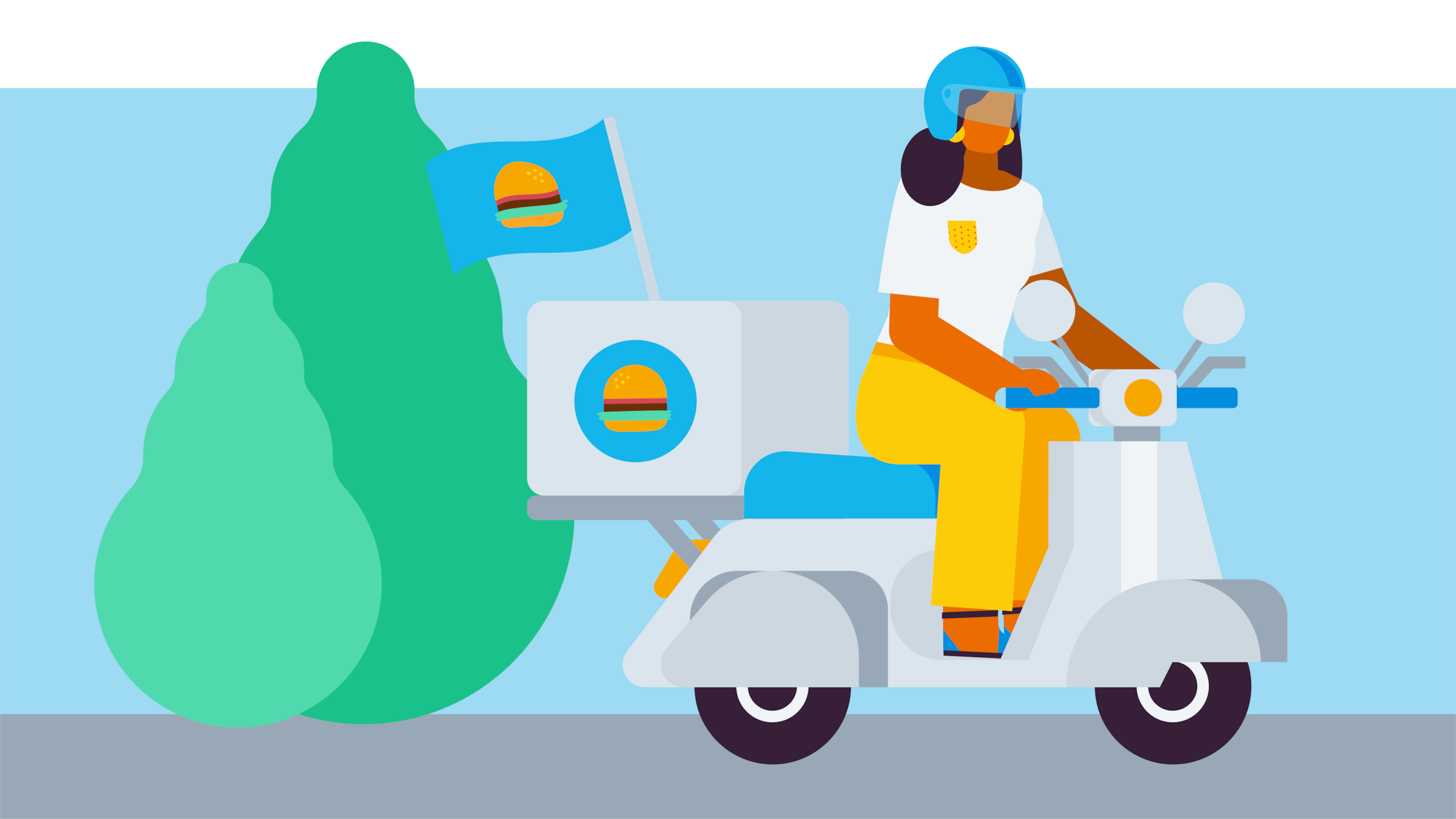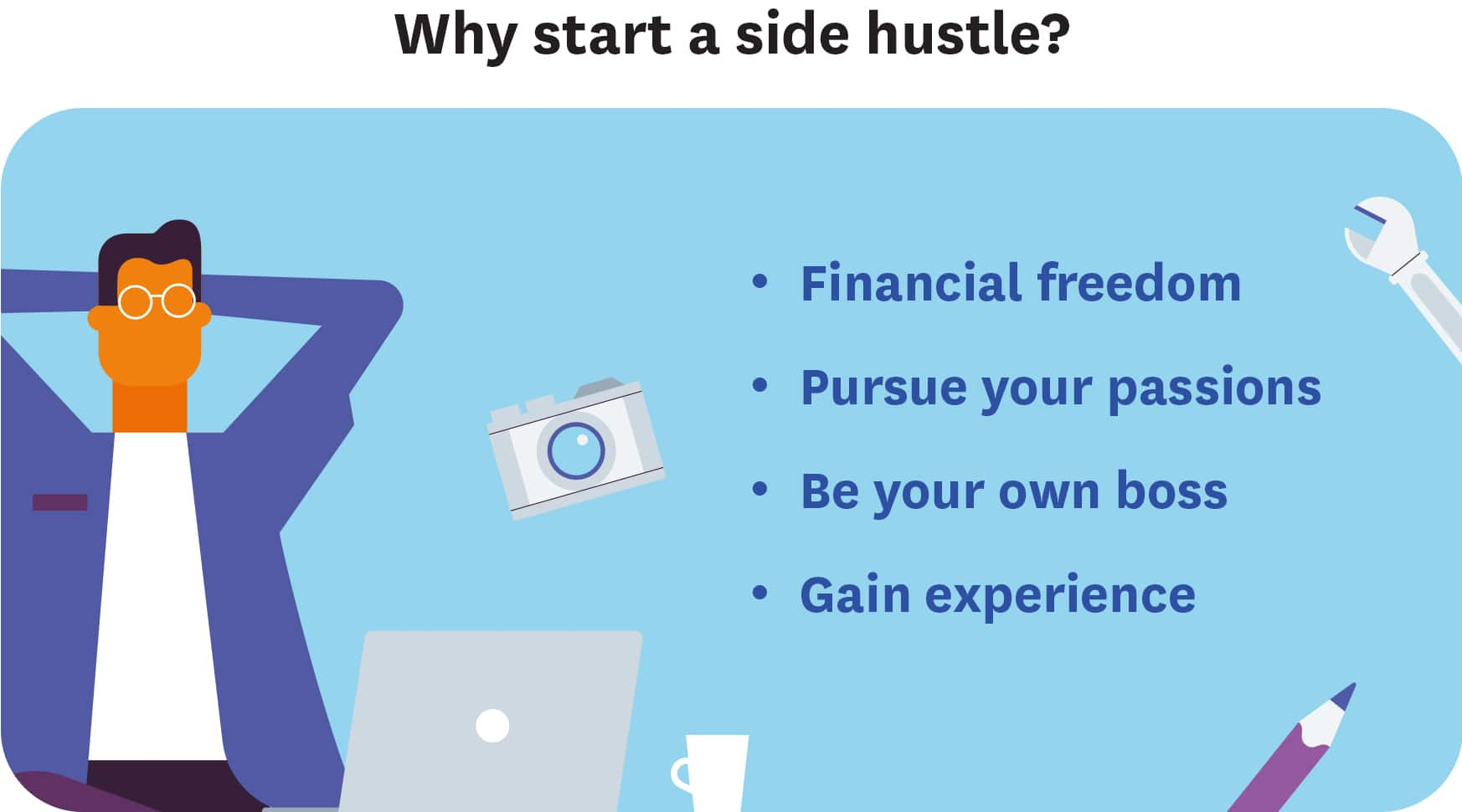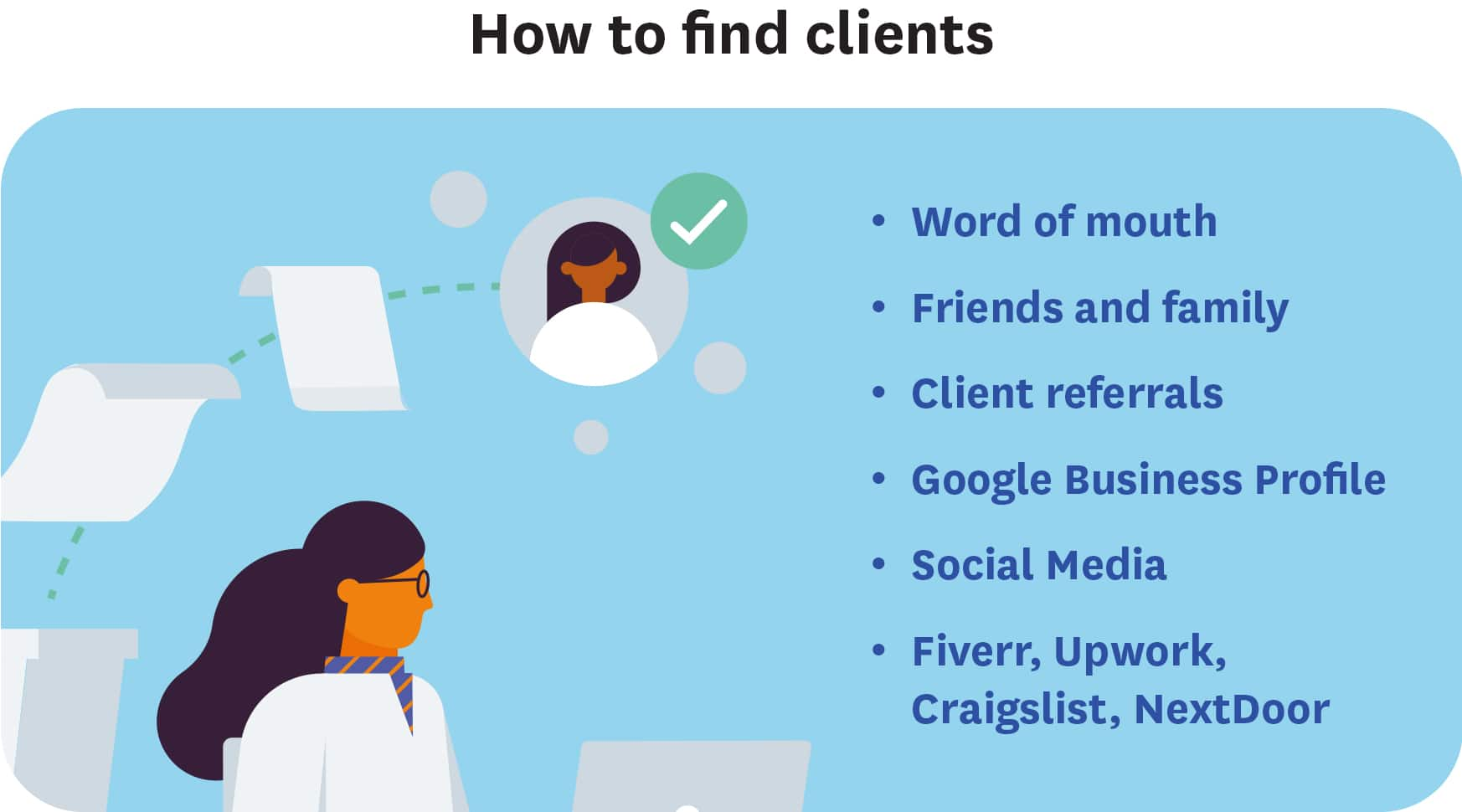How to start a side hustle: A step-by-step guide
Learn about starting a side hustle, how to streamline the process, and how to fast-track your journey towards success.

Published Tuesday 01 August 2023
A side hustle is a great way to earn extra money. It can help with financial stability and provide cash for your financial goals. Side hustles are increasingly popular: 44% of Americans have a side job, earning an average of $473 per month, according to a LendingTree survey.
Alternative income opportunities come in a variety of flavors, from neighborhood dog walker to lifestyle blogger. But they also require time and effort.
What is a side hustle?
A side hustle is a flexible job. It’s work you do “on the side” of your regular full-time job. You can turn just about anything into a side hustle. You might be looking for passive income or an opportunity to supplement your earnings by consulting or tutoring, selling homemade crafts, or designing client projects. Sometimes, a modest side gig can blossom into a fully fledged career.
So what’s the difference between a second job and a side hustle? A second job usually has a set schedule and involves a paycheck from an employer. What sets a side gig apart is the freedom to do it in your spare time, typically in the evening and on weekends. In most cases, the client pays you directly.
Why start a side hustle?
The reasons to start a side hustle are as varied as the hustles themselves. A 2023 Bankrate survey uncovered the top reasons people are starting a business on the side: 33% said the extra income was to cover day-to-day living expenses, 27% wanted more discretionary spending money, 25% were looking to boost their savings, and 12% planned to use the funds to help repay student loans and other debt.
The pros of starting a side hustle include:
- expanding a hobby, gaining experience, and developing skills.
- generating additional income for financial stability and independence.
- enjoying the freedom and control of being your own boss.
- low startup costs make it a low-risk business option
The cons of starting a side hustle include:

- the time, energy, and commitment required
- increased stress levels from balancing other responsibilities
- distraction from your main job that could impact performance
- the risk of scams that result in financial loss or disappointment
Popular side hustle ideas
The best side hustle depends on your goals and how much time you can dedicate to it. Pursuing something you’re passionate about is important too. It’s easier to set aside the time and devote your energy to work on your part-time business if you’re excited about it. Check your contract and the rules at your day job first, and make sure that the work won’t conflict with your current employment.
Online business
Creating an online business as a side hustle gives you the chance to work from anywhere and set your own hours. This works well for professional service jobs, where you don’t need to go into an office to complete the work. Freelancing and consulting are great options to take your everyday work and do it on the side for your own clients. For example, if you do SEO marketing in your day job, you could use those skills to freelance or act as a consultant. Your first clients may be people you already know. But make sure first that there’s no conflict of interest with your current job or employing company.
Freelance writers have various opportunities in content creation, from blog posts and articles to ghostwriting and editing. If you prefer speaking over freelance writing, consider teaching English through a platform like VIPKid that connects you with students around the world.
Platforms like Substack make it easy to make money online with your writing. If you enjoy sharing your thoughts or expertise, consider starting a blog. After you start getting a following, you can offer premium content to those who buy a subscription.
If you have skills at creating visual content, graphic design can put cash in your pocket. You could create social media images, brochures, and logos for clients.
Businesses may also need extra hands to help with email management, scheduling, and customer service. You can fill this need by being a virtual assistant. Bookkeeping and accounting support are also highly sought after by companies and can be a lucrative option if you enjoy managing financial records.
Driver
If you like driving and interacting with people, starting a transportation business could be a great fit. Rideshare drivers might work for Uber or Lyft to help passengers get around town. Apps like DoorDash and Uber Eats specialize in food delivery from restaurants and grocery, convenience, or retail stores.
You can also get paid to shop for and deliver groceries. Instacart and Shipt are two popular grocery delivery services that let you set your own schedule and earn extra pay during peak hours.
Ecommerce
Online selling, or ecommerce, can be a cost-effective business to start as a side hustle. Dropshipping lets you open an online store managing inventory or shipping. You promote and sell the products, and a third party handles the rest. For handmade crafts, digital photos, and other more creative products, Etsy, Shopify, Amazon and eBay can be more profitable.
Other opportunities
Countless other side hustles are available to explore, depending on your skills and interests. The only limit is your imagination. For instance, babysitting offers flexible hours and the opportunity to work with children. Becoming a handyperson through an app like TaskRabbit can bring in extra cash.
If you enjoy household tasks, becoming a home assistant or helping with cleaning and chores can be a rewarding choice. Handy is a good app to find such jobs. Animal lovers can find dog walking and pet-sitting gigs through apps like Wag and Rover, while outdoor enthusiasts might prefer landscaping on the side.
Promoting products through your blog, YouTube channel, or podcast can earn you commissions from an online course or affiliate marketing. If shopping is more your style, mystery shopping pays you to shop and report on the customer service you received. On the same note, retail merchandising lets you get your hands on products by setting up store displays.
10 tips for starting your perfect side hustle
Before settling on the right side hustle, you need to figure out how to launch it. Here’s how to set up a side hustle that’s both enjoyable and profitable.
1. Assess your skills and interests
A side hustle can take up a significant amount of time. Finding one that aligns with your talents and passions can give you better results and overall satisfaction. Start by listing what you’re good at and genuinely sparks your interest.
Do you enjoy writing? Are you proficient in graphic design? Do you have a knack for teaching? The idea is to identify a path that matches your skills and is something you enjoy – and then find a way to monetize it.
2. Consider the amount of time available and if you are allowed to do it
Make sure you understand your employer's rules about other employment, including side gigs. Some employers don't allow it at all, while others may require prior approval before you engage in any additional work. Becoming a competitor to your employer or siphoning clients away from the company so you can freelance for them on the side can land you in big trouble. Make sure to check with your current employer before starting anything new.
Also consider the time you can commit to a side project. Look at your work and family commitments to determine your available free time. Consistent effort is key, but overcommitting to your side hustle at the expense of your day job or personal life could lead to burnout.
3. Create a basic business plan
A basic, one-page business plan can help assess whether your idea is worthwhile. It gives you clarity and acts as a roadmap for your business journey. Here are crucial elements to include:
- The value your business idea brings to customers, the market demand, and how you can set your side hustle apart from your competition.
- The preferences, demographics, and purchasing behaviors of your target audience, and how well your idea addresses needs or gaps in the market.
- The funding you need to launch your side hustle, where the money will come from, and a budget that outlines your projected revenue, expenses, and profitability.
- The marketing strategies you’ll need to reach your target audience, including the channels, tactics, and messaging you’ll use to reach your sales goals.
It also helps to define an initial timeline that outlines key milestones and deadlines for launching and growing your side hustle. Don’t forget to include your accountant and any other professional team members or partners in your plans. Their expertise and support can go a long way to ensuring your success.
4. Consider legal requirements
When planning your side hustle, don’t overlook the legal aspects of starting and running a business. Depending on the type of work, some cities and states may require you to register your business. You may also need a permit or license to operate legally.
Consider your business structure. The IRS automatically classifies you as a sole proprietor unless you set up a legal entity. Some people prefer to set up a limited liability company (LLC) to separate their work from their personal situation. Another way to protect yourself is through business insurance, such as a small business general liability policy.
5. Set your prices
When setting your prices, consider your experience level, competitor rates, and operating costs. Don't undersell yourself if you're charging hourly or by the project for freelance work or setting prices for physical products. Consider your overhead costs and time investment to ensure you make a profit.
Keep business expense records, and hang onto receipts in case you need them for tax purposes. Consider opening a business bank account or a dedicated personal account to separate your business and personal finances.
6. Establish payment methods
You want to get paid for your hard work, of course. So you’ll need to invoice your customers. With Xero, you can invoice and get paid through an online invoicing system. If you’ve never created an invoice before, check out this freelance invoicing guide.
7. Consider taxes
Just like any other business, your side hustle will be subject to tax. You’ll also need to pay self-employment taxes on any income that is not on an IRS W-2 form. These taxes are collected for social security and Medicare. This might involve including a Schedule C with your tax return if you’re a sole proprietor, or filing a separate tax return if you form a corporation. Using a software solution like Xero can be invaluable for keeping track of income, expenses, and tax documentation, ensuring you stay organized.
If you set up your side hustle as a legal entity, you‘ll need an employer identification number (EIN). An EIN is easy to get. It’s free and you can request one by submitting a form online.
8. Establish a schedule
Dedicate specific blocks of time to your side hustle and make it a priority. Share your schedule with family and friends to minimize interruptions during the time periods you dedicate to work. Consistency in your work schedule helps foster productivity and maintain a good work-life balance.
9. Find clients
There’s no shortage of ways to find and attract clients to your side hustle. Word of mouth is a powerful tool. Start by spreading the word among your friends and family. Platforms like Fiverr, Upwork, Craigslist, and NextDoor can be useful for reaching potential clients, but be cautious and watch for potential scams.

Consider setting up a Google business profile and creating social media accounts to increase your visibility. Ask your satisfied customers for referrals, perhaps offering a small discount or bonus for successful leads.
10. Establish your goals
Set goals to help you stay motivated and make them SMART: Specific, Measurable, Achievable, Relevant, Time-bound. Goals to achieve a certain income threshold or number of clients can serve as a roadmap. Plans can evolve as your side hustle grows. You may need to revisit and adjust them along your journey.
Use Xero to manage your finances
A central location to track income and expenses, create and send invoices, and satisfy tax obligations can turn a good side hustle into a great side hustle. Fortunately, accounting software doesn’t have to eat into your profits. Xero can give you an organized start without spending a lot of money.
Take advantage of Xero’s free trial to explore its features, and see how it can best serve your business before you commit to a paid plan. With its user-friendly interface and intuitive features, Xero simplifies the financial aspect of your side hustle, giving you more time to focus on what you do best.
Start using Xero for free
Access Xero features for 30 days, then decide which plan best suits your business.